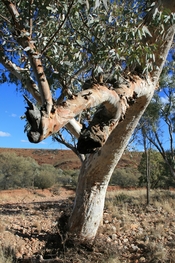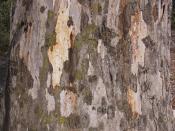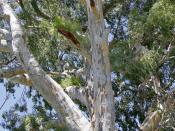POINTS TO CONSIDER:
To which group(s) of plants does this species belong?
From which part of the world does it originate?
What is its growth form, and what does it look like?
In what kind of habitat would it be found in the wild?
What is the ecological role of the plant in its native habitat?
How does it reproduce and disperse?
What features of the plant cause it to have economic or other significance to humans?
How are genetic resources of the plant managed?
The Biology and Ecology of the River Red Gum
The river red gum or Eucalyptus camaldulnesis is of the Myrtaceae family. The biology and ecology of the river red gum can be best described by analysing its habitat, growth form, environment and adaptations, its ecological role, reproduction and dispersal and management of genetic resources.
Species and habitat
The most widespread Eucalypt species in Australia occurring in virtually every mainland state is the Eucalyptus camaldulnesis of the Myrtaceae family, commonly known as the river red gum.
'E. camaldulensis is part of the Eucalyptus subgenus Symohyomytrus section Exsertaria' (EUCLID 2003:3). The river red gum originates from Australia growing in abundance along the Murray-Darling river systems and other river systems of the east coast, north Eyre Peninsula, the Nullarbor Plain and south-western Western Australia; also in the hills of the Mount Lofty Ranges and plain around Adelaide and south-eastern South Australia. (Read 1994:157).
Growth form and description:
The structures of the river red gum are closely related to their functions. Its protective bark, deep root system, adaptive properties of the leaves and its flowering system are examples of these.
The bark of the river red gum is smooth, which is a characteristic of all gums. The colour of the bark is generally white or grey, although it can...


